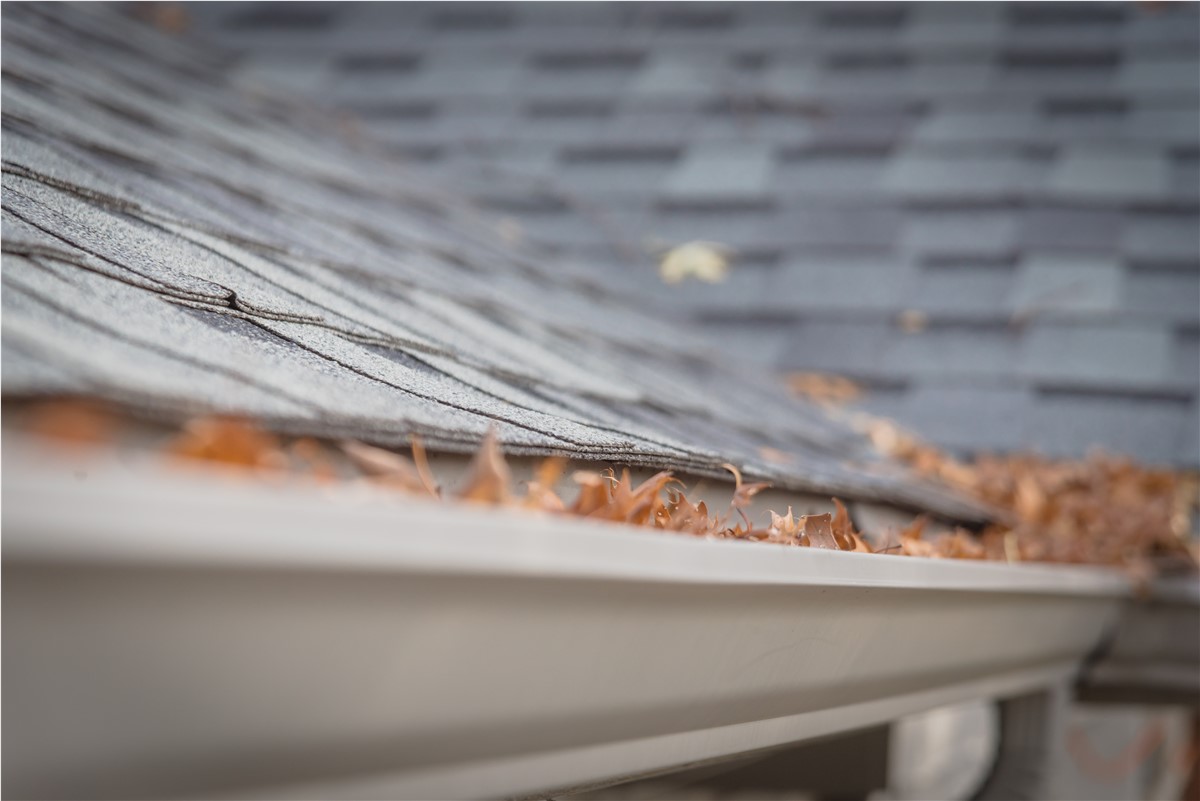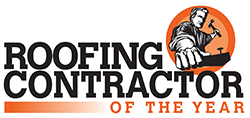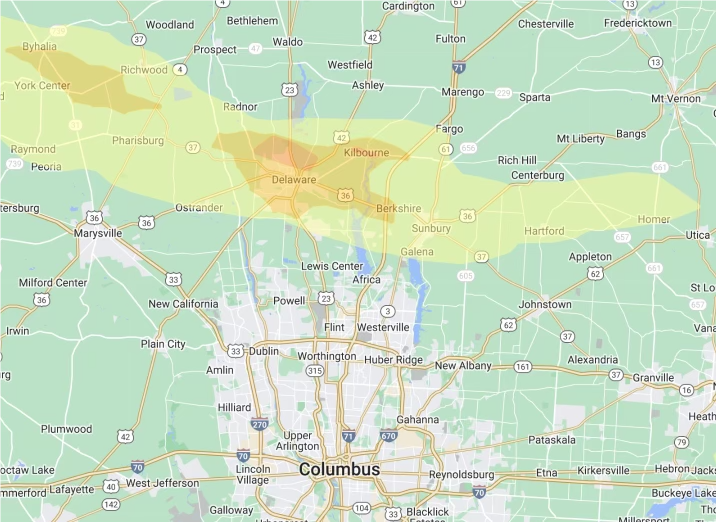
Fall is almost here, and the yard will soon be covered in leaves. But don’t forget all the leaves collecting on your roof! If you’ve read Feazel’s blog before, you know that we tout cleaning your gutters twice a year but removing leaves from your roof?! Trust us on this one, there is a reason that we suggest getting those leaves off your roof before the winter sets in and trimming trees back away from your roof line.
Can Fallen Leaves Damage Your Roof?
The most common thing that causes damage to your roof Is weather-related. Rain, wind, snow, ice, and debris related to weather events. However, something as simple as a small pile of leaves left to rot on your roof can be the starting point for problems with your roof and gutters.
Leaves, really. Don’t let them sit! Have you ever had rain and several days pass and you decide to go remove the leaves from your yard? The top layer seems dry and then you go to scoop a big pile and it’s wet, surprisingly heavy, and starting to rot.
Yep, that’s a heavy pile of rot and dampness resting right on your roof if you choose not to remove them.
Leaves on Roof Causing Leaks
If a pile of leaves sits on your shingles for a long time, you are asking for a leak to form. Here’s what happens.
1. Leaves clump and pile and hold dampness on your shingles. You want your shingles to dry out, not sit under a pile of wet rotting leaves.
2. This resting layer of moisture will saturate your shingle.
3. Moisture penetrating the shingles can start to drip down and cause mold, mildew, leaks, and water damage.
Leaves in Roof Valley
Your roof valley is where two slopes of a roof meet. Coincidentally, this is a highly vulnerable area of your roof system. There are different ways of installing a roof valley and regardless of what you have on your roof, preventing the accumulation of leaves and debris in the valleys is paramount for optimum roof health.
A blocked valley can prevent water from flowing easily down it. This blockage can freeze and turn larger in the winter and ultimately develop into an ice dam.
Clogged Gutters
Open top gutters will collect leaves, pine needles, and other assorted debris. Leaves that collect on your roof and roof valley may find their way into your gutters. Gutter guards may slow or prevent the filling of your roof gutters.
How Do I Remove Leaves from My Roof?
Homeownership is one home improvement project after another and keeping the leaves off your roof is no exception. The best part of getting up on your roof is this project can prevent costly roof repairs in the future.
Leaf Blower Makes Rooftop Leaf Removal Easy
Your leaf blower will make quick work of leaf accumulation on your roof. Regardless of using a cordless leaf blower or an electric leaf blower, this tool will expedite the removal process.
Using a leaf blower on your roof can be tricky. Never carry it up the ladder to get on the roof. Always use a rope to pull it up and lower it down.
Additionally, never blow air up the roof shingles. Always blow air down the roof. Homeowners may not realize how powerful their leaf blowers are, but they pack a punch and can easily cause damage to your shingles.
How to get Leaves Off Your Roof Without Getting on Your Roof!
The team at Feazel gets it. There is too much good football to watch. Ridding the roof of leaves is time-consuming so pick a good time to get up there and get the project wrapped up. That said, there are some ways to not even have to get up on your roof for leaf removal.
Keep Tree Branches Trimmed Back
Do you dislike dragging out your ladder to get leaves off your roof? The most surefire way to stop leaves from accumulating on your roof is to trim your trees back. Shade cover from trees is great and can help prevent the sun from warming up your home. However, branches over your home can drop during an ice storm or windstorm causing huge damage not to mention the regular leaf clean-up on your roof.
If you don’t like getting up on the roof, this is a surefire way to not have to! Call a trusted and insured tree removal company to trim back the branches that drop leaves on your home. You may find someone willing to do it cheaply, but we advise spending the extra money on a fully licensed and insured tree removal company. If something were to happen to your home, you would be protected.
Top Tips for Getting Leaves Off Your Roof
1. Pick a dry day for your project.
Why choose a dry day for getting leaves off your roof? Because wet leaves stick to the shingles. Ideally, it should be a relatively dry period to ensure anything up there is starting to dry out. You still may need to pull some leaves up by hand but that beats throttling your powerful leaf blower to get the mass off the roof.
2. Is your Roof Safe to Climb on?
How steep is the pitch on your roof? Is it safe to maneuver and walk on? If not, check and see if a gutter cleaning service can help you with the removal. Always play it safe.
3. Pick the Safest Tool for a Steep Roof
Some tools just are made for a different application. If it’s steep, trust a gutter cleaning company.
4. Using Power Tools? Get it to Your Roof Safely.
We do not recommend climbing a ladder while carrying a gas leaf blower or strapping the backpack leaf blower and ascending the ladder. Regardless of what type of blower you have, always use a rope and pull the blower up toward you.
5. Blow Leaves Down Your Shingles and Never Up
The power of a leaf blower is categorized with CFM ratings, which is cubic feet per minute. With a variety of blowers on the market, what does that mean for your roof?
Wind-related roof damage can start at 45 MPH. Loose shingles can be lifted at that speed. Let’s translate your leaf blower into a corresponding MPH to gauge how powerful it is.
Electric blowers can range from 95-250 MPH
Gas-powered blowers can go from 145-195 MPH
Backpack blowers range from 145-250 MPH
Battery-powered blowers can range from 150- 250 MPH
Regardless of the speed control of your leaf blower, it is still too strong to blow upward on your shingles. Always blow down the roof. Blowing up the roof can cause the lifting of your shingles or worse!
6. Keep the Leaves Out of Your Gutters
Removing leaves from your roof doesn’t mean filling your gutters. If possible, direct the leaves off the roof where there are no gutters to collect the leaves and debris. If your gutters continually gather leaves, you may look at purchasing gutter guards.
7. Clean Your Gutters AFTER Cleaning Your Roof
There will be debris and leaves that inadvertently wind up in your gutters during leaf removal. Do your gutters last so you don’t have to clean them twice in the fall.
Feazel is the Leading Roof Leak Repair Company
Feazel serves Columbus, Cleveland, Cincinnati, Dayton, Indianapolis, and Raleigh. We provide free roofing estimates. Get in touch if your roof is starting to leak, getting older, or recently experienced an extreme weather event. Our process is simple, contact us and we’ll work to schedule a time to meet that works with your schedule.
Tags
Subscribe to Feazel's Blog




Comments